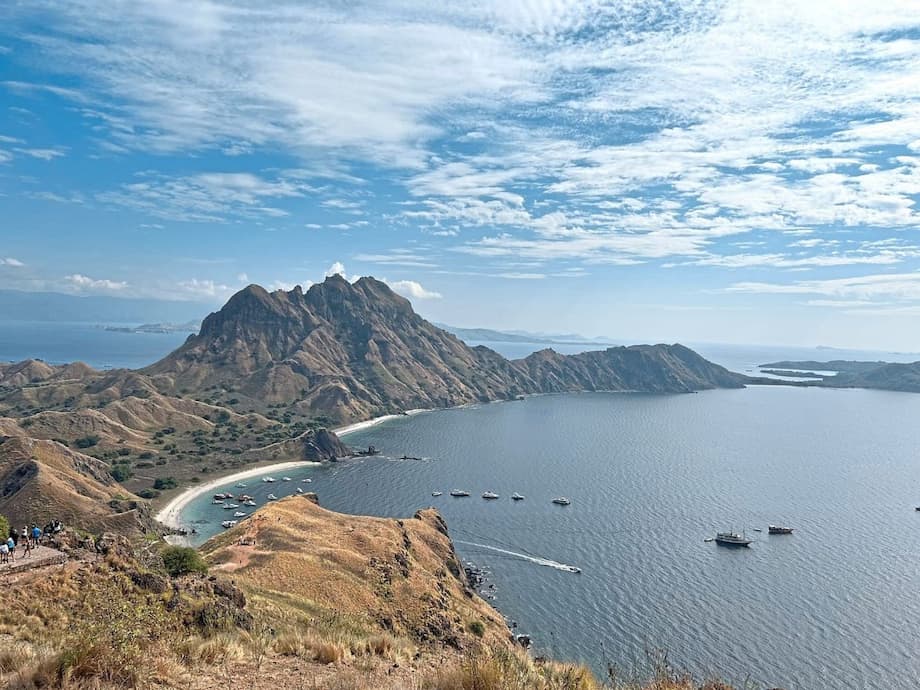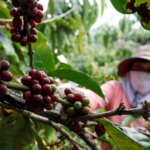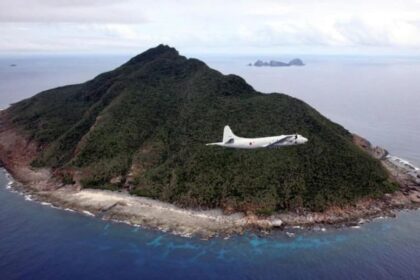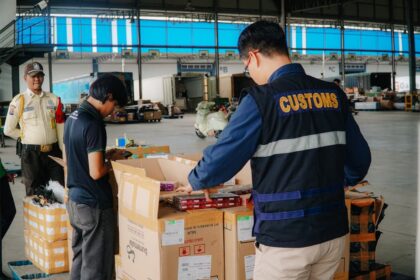Labuan Bajo: Indonesia’s Rising Star for Sustainable Adventure and Authentic Charm
Once a humble fishing town on the western tip of Flores Island, Labuan Bajo has rapidly emerged as one of Indonesia’s most sought-after travel destinations. As overtourism continues to challenge Bali’s delicate balance between culture and commerce, a growing number of Malaysian and international travelers are discovering the unique allure of Labuan Bajo—a place where wild nature, vibrant culture, and sustainable tourism converge.
- Labuan Bajo: Indonesia’s Rising Star for Sustainable Adventure and Authentic Charm
- Why Are Travelers Choosing Labuan Bajo Over Bali?
- Getting There: Labuan Bajo’s Newfound Accessibility
- Labuan Bajo’s Signature Experiences: Nature, Culture, and Adventure
- Accommodations: From Rustic to Refined
- Sustainable Tourism: Balancing Growth and Conservation
- Practical Tips for Visiting Labuan Bajo
- Labuan Bajo’s Broader Significance: Redefining Indonesian Tourism
- In Summary
Labuan Bajo’s transformation is no accident. In 2018, Indonesia’s government designated it as a “super-priority” tourism destination, aiming to diversify the country’s appeal and relieve pressure on Bali. Today, Labuan Bajo is not just a gateway to the legendary Komodo National Park but a destination in its own right, offering unforgettable experiences both on land and at sea.
Why Are Travelers Choosing Labuan Bajo Over Bali?
For decades, Bali has been synonymous with Indonesian tourism. Its beaches, nightlife, and spiritual retreats have drawn millions. Yet, as visitor numbers soar—over 6.5 million international arrivals expected in 2025—many travelers are seeking alternatives that promise authenticity, adventure, and a lighter environmental footprint.
Labuan Bajo’s rise is fueled by several factors:
- Direct international flights from Kuala Lumpur and Singapore have made the region more accessible than ever, cutting travel time and costs.
- Unique natural attractions such as Komodo dragons, pink sand beaches, and world-class diving sites set Labuan Bajo apart from Bali’s more familiar offerings.
- Sustainable tourism initiatives are at the heart of Labuan Bajo’s development, with a focus on preserving local culture and fragile ecosystems.
According to The Bali Sun, searches for Labuan Bajo have surged by over 100% in the past year, with visitors from Malaysia, Singapore, China, South Korea, and Australia leading the way. The trend is clear: travelers want new experiences that go beyond the beaten path.
Getting There: Labuan Bajo’s Newfound Accessibility
Until recently, reaching Labuan Bajo required a multi-leg journey via Bali or Jakarta. That changed in 2025, when Jetstar Asia launched direct flights from Singapore, joining AirAsia’s routes from Kuala Lumpur. Now, Komodo International Airport welcomes travelers from across Southeast Asia and beyond, making it easier than ever to access the wonders of Flores and Komodo National Park.
These new connections have not only boosted tourist numbers but also diversified the visitor base. As Frans Teguh, Acting Director of the Labuan Bajo Flores Authority, explained, “Direct international flights from Malaysia and Singapore are bringing many tourists from different countries. The market composition is usually divided based on the country of origin, with the top markets being China, Indonesia, USA, France, and Switzerland.”
Improved infrastructure, including upgraded roads and expanded harbor facilities, further supports the region’s growth while aiming to minimize environmental impact.
Labuan Bajo’s Signature Experiences: Nature, Culture, and Adventure
What sets Labuan Bajo apart is the sheer diversity of experiences on offer. Whether you’re a nature enthusiast, a culture seeker, or an adventure junkie, the region promises something extraordinary.
Komodo National Park: Encountering the Dragons
No visit to Labuan Bajo is complete without a journey to Komodo National Park, a UNESCO World Heritage Site and home to the world’s largest lizard—the Komodo dragon. These ancient reptiles, which can grow up to three meters long and weigh over 70 kilograms, are found nowhere else on Earth.
Guided tours to Komodo and Rinca Islands allow visitors to observe these formidable creatures in their natural habitat. Safety is paramount: rangers accompany every group, and strict rules are enforced to protect both humans and dragons. As one traveler described, “The island feels like a real-life Jurassic Park, with wild landscapes and the impressive presence of the dragons.”
Morning visits are recommended, as the dragons are most active then. Spotting even one is a thrill, but lucky visitors may see several basking in the sun or moving through the grasslands. The experience is both humbling and exhilarating—a true bucket-list adventure.
Island Hopping and the Liveaboard Phenomenon
One of Labuan Bajo’s defining travel trends is the popularity of liveaboard boat trips. More than 80% of tourists choose to stay on traditional pinisi ships or modern safari boats, exploring the archipelago’s many islands and marine wonders. These multi-day voyages offer a unique blend of adventure, camaraderie, and immersion in nature.
Typical itineraries include:
- Padar Island: Famous for its panoramic viewpoints and three-colored beaches, reached by a challenging but rewarding hike.
- Pink Beach: Its surreal rose-hued sand, created by red foraminifera, is a magnet for photographers and sun-seekers alike.
- Manta Point: A world-renowned dive site where snorkelers and divers can swim alongside graceful manta rays.
- Kelor and Kanawa Islands: Offering pristine beaches, vibrant coral reefs, and excellent snorkeling.
- Pulau Kalong (Flying Fox Island): At sunset, thousands of giant bats take flight, creating a mesmerizing spectacle against the fading sky.
Onboard life is simple but memorable. Meals feature Indonesian dishes, and the sense of community among travelers is strong. As one liveaboard guest put it, “It was a once-in-a-lifetime experience to live aboard a boat for four days in one of the most scenic places on Earth.”
Diving and Snorkeling: Exploring a Marine Wonderland
Labuan Bajo is a mecca for divers and snorkelers, thanks to its location within the Coral Triangle—one of the world’s richest marine environments. Sites like Batu Bolong, Crystal Rock, and Manta Point teem with colorful fish, turtles, reef sharks, and, of course, manta rays.
Whether you’re a seasoned diver or a beginner, local dive shops such as Manta Rhei and Uber Scuba offer courses, guided trips, and equipment rental. The currents can be strong, so it’s important to dive with experienced operators and follow safety guidelines.
For non-divers, snorkeling is equally rewarding. The clear waters and healthy reefs make it easy to spot marine life just below the surface, and many liveaboard tours include snorkeling stops at multiple sites.
Land Adventures: Waterfalls, Caves, and Highland Villages
While the sea is Labuan Bajo’s main draw, the surrounding landscapes offer plenty of terrestrial adventures. Popular excursions include:
- Cunca Plias Waterfall: A morning trek through rainforest and farmland leads to a natural infinity pool with breathtaking views.
- Batu Cermin (Mirror Stone) Cave: Home to fossilized corals and a unique mirror effect when sunlight enters at the right angle, this cave hints at the region’s ancient underwater origins.
- Melo Village: Visitors are welcomed with traditional ceremonies, local tuak (palm wine), and the chance to join in Manggarai dances. The hospitality and homecooked meals are highlights for many travelers.
- Bukit Cinta (Love Hill): A favorite sunset spot for couples and photographers, offering sweeping vistas over the Flores Sea.
These experiences provide a window into the daily life and enduring traditions of Flores’ diverse communities.
Accommodations: From Rustic to Refined
Labuan Bajo’s accommodation scene has evolved rapidly, catering to a wide range of tastes and budgets. Options include:
- Liveaboard boats: The most popular choice for adventurous travelers, offering all-inclusive packages and a front-row seat to the region’s natural wonders.
- Eco-friendly hotels and hostels: Properties like Le Pirate Beach Club attract a young, social crowd with affordable bunk rooms, rooftop bars, and communal dining.
- Luxury resorts: The arrival of TA’AKTANA, a Marriott Luxury Collection property, signals Labuan Bajo’s growing appeal to high-end travelers. The resort blends local architecture, sustainability, and world-class amenities, with overwater villas inspired by traditional Wae Rebo houses and a focus on locally sourced cuisine.
Regardless of where you stay, the emphasis is on sustainability, community, and authentic experiences. Many properties support local employment, use eco-friendly practices, and offer curated excursions to lesser-known sites.
Sustainable Tourism: Balancing Growth and Conservation
Labuan Bajo’s rapid rise has brought both opportunities and challenges. The Indonesian government and local stakeholders are keenly aware of the need to balance economic benefits with environmental and cultural preservation.
Key sustainability initiatives include:
- Visitor caps and periodic closures at Komodo National Park to protect fragile ecosystems and endangered species.
- Promotion of regenerative travel, encouraging longer stays and deeper engagement with local communities.
- Waste reduction, composting, and energy-saving measures at hotels and resorts.
- Support for traditional crafts and cultural heritage, such as the UNESCO-recognized Pinisi boatbuilding tradition.
As Peter-Paul Kleiss, General Manager of TA’AKTANA, explained, “We believe in integrating local culture and sustainability into every aspect of our operations, from architecture to culinary offerings. Our goal is to set new benchmarks for luxury hospitality in Indonesia’s emerging destinations.”
Practical Tips for Visiting Labuan Bajo
Planning a trip to Labuan Bajo is easier than ever, but a few practical tips can help ensure a smooth and rewarding experience:
- Best time to visit: April to November offers the driest weather and calmest seas, ideal for hiking, diving, and boat trips.
- Book tours in advance: Liveaboard trips and popular excursions can fill up quickly, especially during peak season.
- Pack light and smart: Bring sun protection, sturdy shoes for hiking, and reef-safe sunscreen for water activities.
- Respect local customs: Dress modestly in villages, ask before taking photos, and support local businesses.
- Stay informed: Check for updates on park closures or conservation measures before your trip.
Travelers consistently praise the friendliness and expertise of local guides, as well as the seamless organization of tours. As one reviewer noted, “The guides are knowledgeable, attentive, and make every trip memorable and safe.”
Labuan Bajo’s Broader Significance: Redefining Indonesian Tourism
Labuan Bajo’s ascent is emblematic of Indonesia’s broader shift toward sustainable, high-value tourism. Alongside Lake Toba, Borobudur, Mandalika, and Likupang, it forms part of the government’s “super-priority” destinations—regions chosen for their potential to attract discerning travelers while safeguarding natural and cultural assets.
This strategy is paying off. By late 2024, Indonesia had welcomed nearly 12.7 million foreign tourists, a 20% increase from the previous year. Labuan Bajo’s appeal lies in its ability to offer something different: a sense of discovery, a slower pace, and a genuine connection to place and people.
As one Malaysian traveler reflected after a whirlwind tour of the region, “Reminiscing on the untouched natural beauty of Labuan Bajo, I opine that this region is best left as it is, lest it becomes overcommercialized like Bali.”
In Summary
- Labuan Bajo is rapidly emerging as a top alternative to Bali, offering unique natural and cultural experiences.
- Direct international flights from Singapore and Kuala Lumpur have made the region more accessible than ever.
- Signature experiences include encounters with Komodo dragons, liveaboard boat trips, world-class diving, and immersive cultural excursions.
- Sustainable tourism is central to Labuan Bajo’s development, with initiatives to protect the environment and support local communities.
- Accommodations range from rustic liveaboards to luxury eco-resorts, catering to all types of travelers.
- Labuan Bajo exemplifies Indonesia’s shift toward high-value, responsible tourism, offering a rewarding alternative to mass-market destinations.











